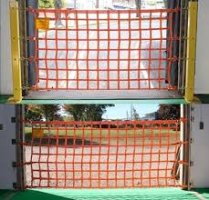bill1952
SAWHORSE
Is there a maximum deflection allowed for a guard in IRC? I searched but came up with nothing. I did learn OSHA allows 3" of deflection, allowing the top of a guardrail normally at 42" to deflect to 39". (Wow) Has anyone here measured guard rail deflection, perhaps to see if under the 200 pound load it's below 36" aff?
Same apply to infill under top of a guard? Any limit to how far the 50 pounds on 1 SF can deflect the infill?
Same apply to infill under top of a guard? Any limit to how far the 50 pounds on 1 SF can deflect the infill?


